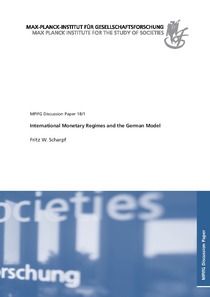International monetary regimes and the German model
"The end of the Bretton Woods regime and the fall of the Iron Curtain deepened the export orientation of the German model of the economy. Only after entry into the Monetary Union, however, did rising exports turn into a persistent export–import gap that became a problem for other eurozone econo...
| Main Author: | |
|---|---|
| Institution: | ETUI-European Trade Union Institute |
| Format: | TEXT |
| Language: | English |
| Published: |
Köln
2018
MPIfG |
| Subjects: | |
| Online Access: | https://www.labourline.org/KENTIKA-19399598124911177709-international-monetary-regimes.htm |
| Summary: | "The end of the Bretton Woods regime and the fall of the Iron Curtain deepened the export orientation of the German model of the economy. Only after entry into the Monetary Union, however, did rising exports turn into a persistent export–import gap that became a problem for other eurozone economies. This Discussion Paper shows why the present asymmetric euro regime will not be able to enforce their structural transformation on the German model. Neither will German governments be able to respond to demands that would bring the performance of the German economy closer to eurozone averages. Instead, it is more likely that present initiatives for financial and fiscal risk sharing will transform the Monetary Union into a transfer union. " |
|---|---|
| Physical Description: | 81 p. Digital |

